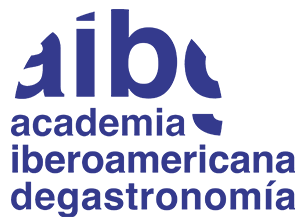Figure 3 represents the box plots of land getting Lay step three
The average get try 1.478 throughout the plosive reputation, 1.forty five throughout the fricative condition, 1.707 about nose standing, and you will step one.942 regarding liquid status. A low area from inside the Table 3 summarises the outcome of modelling out of Lay step 3. The brand new standard is new fricative updates, so we compared the fresh new plosive versus. fricative standards, this new nasal against. fricative standards, additionally the water versus. fricative standards. Very first, the essential difference between new plosive and you will fricative conditions wasn’t credible, while the 95% CI associated with coefficient imagine integrated no [?0.06, 0.09]. 2nd, the nose vs. fricative and you will h2o against. fricative comparisons revealed that both of the coefficient quotes was positive (? = 0.16) (nasal) and you will (? = 0.3) (liquid) and you will both of this new 95% CIs don’t is zero ([0.09, 0.24] (nasal) and you will [0.23, 0.38] (liquid)), and so suggesting one to nonce terminology having nasals and drinking water was basically evaluated to get a great deal more kawaii labels as opposed to those having fricatives.
Discussion
The modern investigation indicated that (1) labial consonants may feel with the kawaii than simply coronal and you can dorsal consonants, (2) high-regularity consonants are more likely to end up being from the kawaii than low-frequency consonants, and (3) liquids /?/ and you will nose /n/ may end up being from the kawaii than just fricative /z/ (and you may plosive /d/). These show suggest Kroatiska kvinnor som ser Г¤ktenskap that the place-of-articulation function in the kawaii try [labial], and regularity element in the kawaii was [high-frequency]. The way-of-articulation feature means then conversation. As the consonant indicating the greatest mediocre score are drinking water /?/, we could think that the manner-of-articulation element associated with kawaii are [liquid]. not, due to the fact Bayesian research exhibited, nasal /n/ is much more more likely for the kawaii than just fricative /z/. Thus, we could conclude that h2o and you may nasals, each of that are [sonorant], is with the kawaii.
General dialogue
This study showed that the features of consonants associated with kawaii in Japanese are [labial], [high frequency], and [sonorant]. The motivations for the three features are briefly discussed below. The feature [labial] may be linked to a pouting gesture, that is, a gesture made using both lips can induce Japanese people to feel kawaii (Kumagai, 2020). The feature [labial] may also be linked to the image of babies, in that bilabial consonants are more frequent in the earlier phases of language acquisition (Kumagai and Kawahara, 2020). Thus, it can be said that consonants with feature [labial] can evoke the image of babies, at least in Japanese. The feature [high frequency] may stem from quickness, as the frequency code hypothesis states that high-frequency sounds are associated with smallness (Ohala, 1984, 1994). The feature [sonorant] may be connected to a number of observations on sound symbolic effects in names and shapes. Sonorants are better suited for female names or bulleted shapes (Shinohara and Kawahara, 2013; Asano et al., 2015). To summarise, the factors associated with kawaii may include pouting gesture, babyishness, smallness, femininity, and roundness. It is interesting that some of these factors overlap with the factors noted by Kinsella (1995) for cute characters. She noted that ‘The essential anatomy of a cute cartoon character consists in its being small, soft, infantile, mammalian, round, without bodily appendages (e.g., arms), without bodily orifices (e.g., mouths), non-sexual, mute, insecure, helpless or bewildered’. (p. 226; emphasis mine). Taking the fact into consideration that Kinsella (1995) was published more than 25 years ago, it is inferred that something that evokes kawaii in the minds of Japanese speakers has not changed for at least 25 years.
As noted in the introduction section, it is well known that sound symbolism plays an important role in ; Klink and Wu, 2014). The exploration of what consonants are better suited for kawaii names is an interesting topic. Based on the above discussion, it is inferred that the consonants that induce the feeling of kawaii among Japanese people include /p/, /?/, and /m/, as the first consonant /p/ is specified with [labial] and [high frequency], the second consonant /?/ with [sonorant], and the third consonant /m/ with [labial] and [sonorant]. Based on his kawaii judgment experiment with Japanese speakers, Kumagai (2019) discusses whether /m/, in addition to /p/, is another consonant expressive of kawaii in Japanese, since his study results demonstrated that fewest differences existed regarding average scores between nonce words with /p/ and those with /m/. In Japanese words or character names that seem to be associated with kawaii, we find examples that contain /p/, /?/, or /m/. For example, a mimetic word, or onomatopoeia, purupuru, is used to express something soft or something that trembles like jelly. We also find a cute character name pomupomu purin ‘Pom Pom Purin’, created by Sanrio. Moreover, Kawahara (2019) reported that bilabial consonants and /?/ are often used in girls’ names in a popular Japanese anime PreCure, broadcast since 2004. It is expected that these consonants will prove applicable in naming anime characters or products that are characterised by kawaii.






Deja una respuesta